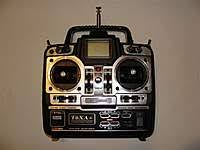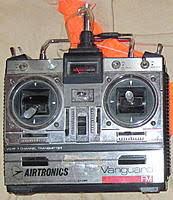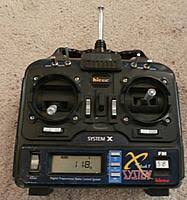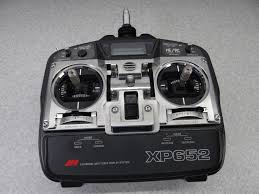Recommendations for the
Beginning Builder and Pilot
The following article is reprinted from the June 1997 FlightLine.
RCMA Recommended Equipmentby Jim Doty
The RCMA flight training staff have been receiving a
lot of questions about what equipment is best for a
beginner. They asked me to write an article for the
FlightLine listing the best aircraft, radio, and engine
for the beginner.
Before I start listing the recommendations, it's important to note here that the listed items are not the only choices for the first time flyer, and that RCMA does not require a new flying student to have any particular hardware to receive flight training. The items listed in this article have been utilized by many new students with great success, and the instructors have a lot of experience with the setup and maintenance of these choices. As I list the items, I will try to point out their important features so that if you decide to select an alternate vendor, that you can pick an alternative with most of the same good properties. The Aircraft: The selection of model depends on your experience and in how much time you want to put into the assembly. The following are rough categories into which most models will fall:
In the case of kits, the situation is different. Many members have built the Sig Kadet LT-40 with good results. The LT-40 is an easy to fly trainer with predictable performance, but it is still agile enough for training introductory acrobatics like loops rolls and stalls. Overall the performance of the LT-40 makes it a good choice for the first time pilot. 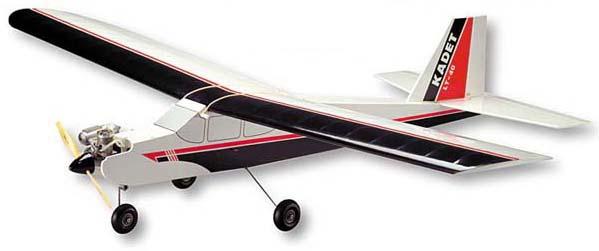
However, where the kit really stands out, is in its documentation and ease of assembly. The kit comes with a fully illustrated assembly manual with many tips that ease the assembly process. The construction is simple and rugged making it go together quickly. The kit also includes nearly everything you need to get started, like fuel tank, landing gear, and control rods. All you will need to complete the plane is radio gear and an engine. Several builders that started with the LT-40, have told me they were glad that it was their first plane, and that they used the instructions and examples in the LT-40 kit to help them understand the instructions and drawings in the later models they built. Building the LT-40 is about as close as you get to taking a course in building model airplanes. The combination of ease of assembly, excellent instructions, and great flying characteristics make the LT-40 the recommended plane for any first-time builder/flyer. The Engine: The LT-40 calls for a 40 to 45 sized engine. On the RCMA grass field, you want plenty of power to get out of the tall grass. So a 45 or 46 sized engine is what you need. Once you are airborne, you can always throttle back for slower flight, but when you're trying to take-off and you pull up too hard, you'll be glad for all the power you can get to keep you from stalling. You will want an engine that is easy to start, easy to tune, and that provides reliable power, and is rugged. Several of the higher end engines will meet these requirements, but watch out for the low-end 40's. Some of the low-priced motors can really give you trouble, and make flight training a real pain. The engine that the RCMA recommends is the Super Tiger 45. We have a lot of good experience this engine, and its combination of rugged design, good performance, reliability, and ease of tuning, make it a good bet for any first time modeler. This engine had been slightly more expensive than many of the other engines, but recently prices have fallen, making this engine a real value. 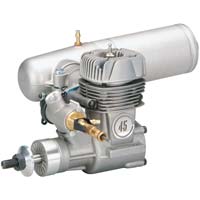
Because there are so many members with these engines (the club trainers even use these engines), the flight training crew knows how to set these up. So after you get your Super Tiger 45 installed, bring it out to the field and they can set it up for best performance and proper break-in. The Radio: Trainers like the LT-40 only need four channels to control the throttle, elevator, rudder, and ailerons. But you may soon find that a low-cost four channel radio is not adequate for your flight training. There are several features that are very helpful in flight training that just aren't available in the four channel systems. To get the features you need, you will probably need to buy a six or seven channel system. Some features you will want are:
The computer radios generally have a few more features and cost a little more. Some of these computer radios have exponential rates. This is a nice feature which provides low sensitivity to small stick movements, but larger sensitivity to large motions. This can really come in handy for latter aerobatics training. It provides the high throws required for aerobatics, but keeps the mid-stick sensitivity down to reduce over controlling in normal maneuvers. The following radios are good baseline recommendations for your first system. All have the servo reversing and dual rate features which are most desirable for flight training. They also retain their usefulness as your skills increase: With whichever radio you select, the above set of equipment should be an excellent start for the first-time modeler.
James H. Doty, FlightLine Editor
|
| RCMA Recommended Equipment at a glance: | ||||||
|
Return to RCMA Home Page
This page does not reflect the views of Collins Aerospace in any way.
For questions about this web page, contact:
RCMA webmaster
